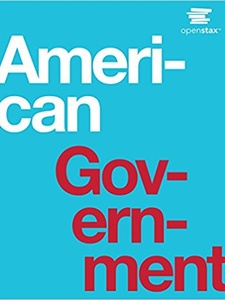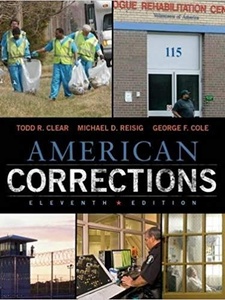Kinh Nghiệm về What did the U.S. Supreme Court decide in the Civil Rights Cases of 1883 quizlet? 2022
Bạn đang tìm kiếm từ khóa What did the U.S. Supreme Court decide in the Civil Rights Cases of 1883 quizlet? được Update vào lúc : 2022-11-29 10:55:12 . Với phương châm chia sẻ Kinh Nghiệm về trong nội dung bài viết một cách Chi Tiết Mới Nhất. Nếu sau khi tìm hiểu thêm Post vẫn ko hiểu thì hoàn toàn có thể lại Comment ở cuối bài để Ad lý giải và hướng dẫn lại nha.
Upgrade to remove ads
Nội dung chính Show
- What did the Supreme Court decide in the Civil Rights Cases of 1883?
- What did the Civil Rights Act of 1883 accomplish?
- How did the Supreme Court ruling on the Civil Rights Cases of 1883 affect the rights of African American?
- How did the Supreme Court ruling on the Civil Rights Cases of 1883 affect the rights of African Americans quizlet?
Only SGD 41.99/year
Flashcards
Learn
Test
Match
Flashcards
Learn
Test
Match
no
Terms in this set (31)
Civil Rights Cases (1883)
Neither the Thirteenth nor Fourteenth Amendments empower Congress to safeguard blacks against the actions of private individuals. To decide otherwise would afford blacks a special status under the law that
whites did not enjoy.
Plessy v. Ferguson (1896)
The “separate but equal” provision of private services mandated by state government is constitutional under the Equal Protection Clause.
Korematsu v. United States (1944)
The exclusion order leading to Japanese American Internment was constitutional.
Brown v. Board of Education (1954)
Segregation of students in public schools violates the Equal Protection Clause of the Fourteenth Amendment, because separate facilities are inherently unequal. District Court of Kansas reversed.
Brown v. Board of Education II (1955)
It is up to the courts to decide whether the action of the school authorities constitutes good
faith implementation of the governing constitutional principles.
Cooper v. Aaron (1958)
The states are bound by the Court’s decisions, and cannot choose to ignore them. Eighth Circuit Court of Appeals affirmed.
Heart of Atlanta Hotel v. United States (1964)
Congress did not unconstitutionally exceed its powers under the Commerce
Clause by enacting Title II of the 1964 Civil Rights Act, which prohibited racial discrimination in public accommodations. Northern District of Georgia affirmed.
Swann v. Charlote-Meckenburg School District (1971)
Busing students to promote integration is constitutional.
The Civil Rights Act of 1964
An act to enforce the
constitutional right to vote, to confer jurisdiction upon the district courts of the United States of America to provide injunctive relief against discrimination in public accommodations, to authorize the Attorney General to institute suits to protect constitutional rights in public facilities and public education, to extend the Commission on Civil Rights, to prevent discrimination in federally assisted programs, to establish a Commission on Equal Employment Opportunity, and for other
purposes.
University of California v. Allan Bakke (1978)
Bakke was ordered admitted to U.C.-Davis Medical School, and the school’s practice of reserving 16 seats for minority students was struck down. Judgment of the Supreme Court of California reversed insofar as it forbade the university from taking race into account in admissions.
Aderand v. Pena
(1995)
All racial classifications, imposed by whatever federal, state, or local government actor, must be analyzed by a reviewing court under a standard of “strict scrutiny,” the highest level of Supreme Court review (such classifications are constitutional only if they are narrowly tailored measures that further compelling governmental interests).
Grutter v. Bollinger (2003)
University
of Michigan Law School admissions program that gave special consideration for being a certain racial minority did not violate the Fourteenth Amendment.
Gratz v. Bollinger (2003)
A state university’s admission policy violated the Equal Protection Clause of the Fourteenth Amendment because its ranking system gave an automatic point increase to all racial minorities rather than making individual determinations.
Eastern District of Michigan affirmed in part, reversed and remanded.
Fisher v. Texas (2013)
The Fifth Circuit Court of Appeals failed to apply strict scrutiny in its decision affirming the admissions policy. The decision is vacated, and the case remanded for further consideration.
Title IX
An Act to amend the Higher Education
Act of 1965, the Vocational Education Act of 1963, the General Education Provisions Act (creating a National Foundation for Postsecondary Education and a National Institute of Education), the Elementary and Secondary Education Act of 1965, Public Law 874, Eighty-first Congress, and related Acts, and for other purposes.
Parents Involved in Community Schools v. Seattle School District (2006)
The student assignment
plan of Seattle Public Schools and Jefferson County Public Schools does not meet the narrowly tailored and compelling interest requirements for a race-based assignment plan because it is used only to achieve “racial balance.” Public schools may not use race as the sole determining factor for assigning students to schools. Race-conscious objectives to achieve diverse school environment may be acceptable.
The Equal Pay Act of 1963
Congress stated that sex discrimination depresses wages and living standards for employees necessary for their health and efficiency; prevents the maximum utilization of the available labor resources; tends to cause labor disputes, thereby burdening, affecting, and obstructing commerce; burdens commerce and the không lấy phí flow of goods in commerce; and constitutes an unfair method of competition.
The Fair Housing Act of
1969
The primary purpose of the Fair Housing Law of 1968 is to protect the buyer/renter of a dwelling from seller/landlord discrimination. Its primary prohibition makes it unlawful to refuse to sell, rent to, or negotiate with any person because of that person’s inclusion in a protected class.
The Voting Rights Act of 1965
The Voting Rights Act of 1965 is a landmark piece of
federal legislation in the United States that prohibits racial discrimination in voting.
The 24th Amendment
The Twenty-fourth Amendment (Amendment XXIV) of the United States Constitution prohibits both Congress and the states from conditioning the right to vote in federal elections on payment of a poll tax or other types of tax.
Baker v. Carr (1962)
The redistricting of state legislative districts is not a political question, and thus is justiciable by the federal courts.
Title IX
No person in the United States shall, on the basis of sex, be excluded from participation in, be denied the benefits of, or be subjected to discrimination under any education program or activity receiving federal financial assistance.
Muller v. Oregon (1908)
Oregon’s limit on the working hours of women was constitutional under the Fourteenth Amendment, because it was justified by the strong state interest in protecting women’s health. Supreme Court of Oregon affirmed.
Craig v. Boren (1976)
To regulate in a sex-discriminatory fashion, the government must demonstrate that its use
of sex-based criteria is substantially related to the achievement of important governmental objectives.
Title VII of the Civil Rights Act
Outlawed discrimination in employment in any business exceeding twenty five people and created an Equal a Employment Opportunities Commission to review complaints, although it lacked meaningful enforcement powers.
Roe v.
Wade
Abortion
Romer v. Evans
An amendment to the Colorado Constitution that prevents protected status under the law for homosexuals or bisexuals was struck down because it was not rationally related to a legitimate state interest. Supreme Court of Colorado affirmed.
Lawrence v. Texas 2003
Gay
sex cannot be outlawed- privacy
Windsor v. United States
The defense marriage act, which strictly and federally defined marriage as a union between one man and one woman as husband and wife, is unconstitutional under the fifth amendment due process clause’s guarantee of equal protection. The federal government must recognize same-sex marriages that have been approved by the states.
The Americans with Disabilities Act (1991)
An act to establish a clear and comprehensive prohibition of discrimination on the basis of disability
Tennessee v. Lane (2004)
Congress has the power under Section 5 of the fourteenth amendment to abrogate the States’ sovereign immunity in cases implicating the fundamental right of access to the
courts.
Sets found in the same thư mục
Juvenile Justice
248 terms
Judicial Administration Midterm
46 terms
LSAT
1,016 terms
WEB Dubois
16 terms
Other sets by this creator
Alkyne reactions by catalyst
9 terms
Alkene reactions by catalyst
10 terms
Cranial Nerves
12 terms
SOCI 1001 chapter 2
31 terms
Recommended textbook solutions

Politics in States and Communities
15th EditionSusan A. MacManus, Thomas R. Dye
177 solutions

American Government
1st EditionGlen Krutz
412
solutions

Criminal Justice in America
9th EditionChristina Dejong, Christopher E. Smith, George F Cole
105 solutions

American Corrections
11th EditionMichael D. Reisig, Todd R. Clear
160
solutions
Other Quizlet sets
FINA 3313 Exam 2 Chapter 5-8
119 terms
Atom and the Periodic Table
30 terms
cog psych exam 1
50 terms
What did the Supreme Court decide in the Civil Rights Cases of 1883?
In 1883, The United States Supreme Court ruled that the Civil Rights act of 1875, forbidding discrimination in hotels, trains, and other public spaces, was unconstitutional and not authorized by the 13th or 14th Amendments of the Constitution.
What did the Civil Rights Act of 1883 accomplish?
The U.S. Supreme Court declared the act unconstitutional in the Civil Rights Cases (1883). Enacted on March 1, 1875, the Civil Rights Act affirmed the “equality of all men before the law” and prohibited racial discrimination in public places and facilities such as restaurants and public transportation.
How did the Supreme Court ruling on the Civil Rights Cases of 1883 affect the rights of African American?
In an 8–1 decision, the landmark ruling struck down the critical provision in the Civil Rights Act prohibiting racial discrimination in public places (such as hotels, restaurants, theatres, and railroads), what would later be called “public accommodations.” The ruling barred Congress from remedying racial segregation …
How did the Supreme Court ruling on the Civil Rights Cases of 1883 affect the rights of African Americans quizlet?
In The Civil Rights Act of 1883 SCOTUS prohibited public discrimination against African Americans, but could not prohibit private discrimination.
Tải thêm tài liệu liên quan đến nội dung bài viết What did the U.S. Supreme Court decide in the Civil Rights Cases of 1883 quizlet?




Share Link Cập nhật What did the U.S. Supreme Court decide in the Civil Rights Cases of 1883 quizlet? miễn phí
Bạn vừa tìm hiểu thêm Post Với Một số hướng dẫn một cách rõ ràng hơn về Video What did the U.S. Supreme Court decide in the Civil Rights Cases of 1883 quizlet? tiên tiến và phát triển nhất và Share Link Cập nhật What did the U.S. Supreme Court decide in the Civil Rights Cases of 1883 quizlet? Free.

Giải đáp vướng mắc về What did the U.S. Supreme Court decide in the Civil Rights Cases of 1883 quizlet?
Nếu sau khi đọc nội dung bài viết What did the U.S. Supreme Court decide in the Civil Rights Cases of 1883 quizlet? vẫn chưa hiểu thì hoàn toàn có thể lại Comment ở cuối bài để Ad lý giải và hướng dẫn lại nha
#Supreme #Court #decide #Civil #Rights #Cases #quizlet